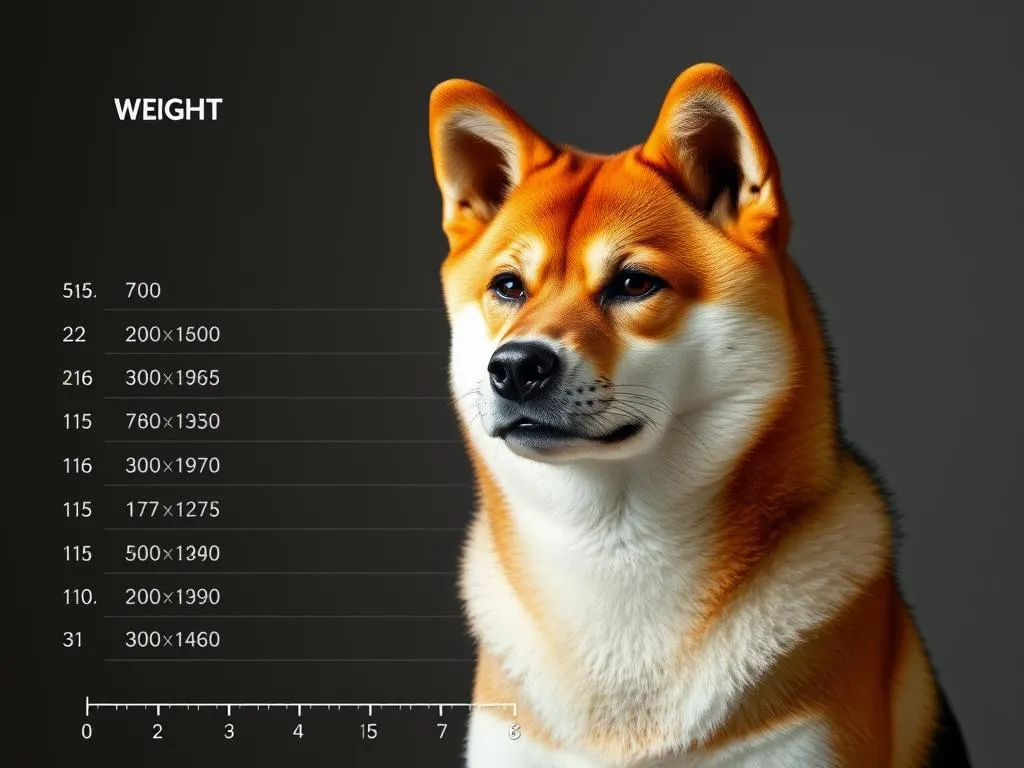
Introduction
The Shiba Inu is a captivating dog breed known for its fox-like appearance and spirited personality. Originating from Japan, this breed has gained global popularity, not just for its aesthetics but also for its intelligence and loyalty. Understanding the Shiba Inu size weight growth chart is essential for prospective owners and dog lovers alike. It helps in tracking their growth, ensuring they maintain a healthy weight, and understanding their developmental milestones.
In this article, we will delve into the intricacies of the Shiba Inu’s growth, offering a detailed growth chart and insights into their overall development.
Understanding the Shiba Inu Breed
Origin and History
The Shiba Inu is one of Japan’s oldest and smallest native breeds, with roots tracing back over 2,000 years. Historically, they were bred for hunting small game in the mountainous regions of Japan. Their name, “Shiba,” refers to the small brushwood found in their native habitat, which is where they were often used for hunting.
Culturally, the Shiba Inu holds significant importance in Japan, often symbolizing loyalty and courage. They are celebrated in Japanese art, folklore, and even as a symbol of the Japanese post-war recovery. Over the years, the breed has evolved, maintaining its distinctive traits while adapting to modern lifestyles.
Breed Characteristics
The Shiba Inu is characterized by its compact size, erect ears, and curled tail. Their coat is dense and plush, typically found in colors such as red, sesame (red with black-tipped hairs), black and tan, or cream.
In terms of temperament, Shiba Inus are known for being spirited, bold, and sometimes aloof with strangers, making them excellent watchdogs. They are intelligent and independent, traits that can sometimes translate into a stubborn streak during training. It’s important to note that Shiba Inus can be prone to certain health issues, including hip dysplasia, patellar luxation, and certain eye conditions.
Shiba Inu Size and Weight Overview
Average Size of Adult Shiba Inu
The average size of an adult Shiba Inu varies slightly between males and females.
- Males typically stand between 14.5 to 16.5 inches tall and weigh around 23 to 28 pounds.
- Females are usually a bit smaller, standing between 13.5 to 15.5 inches and weighing 17 to 23 pounds.
Understanding these averages can help owners set expectations for their Shiba Inu’s growth and development.
Factors Affecting Size and Weight
Several factors can influence the size and weight of a Shiba Inu during its growth stages:
-
Genetic Factors: Like all breeds, genetics play a significant role in determining the ultimate size and weight of a Shiba Inu. Dogs from larger or smaller lineage may reflect those traits.
-
Nutrition and Diet: A balanced diet is crucial for healthy growth. Overfeeding can lead to obesity, while underfeeding can stunt growth.
-
Exercise and Physical Activity: Regular physical activity is essential. Shiba Inus are energetic dogs that require daily exercise to maintain a healthy weight and muscle tone.
Growth Stages of the Shiba Inu
Puppy Stage (0-6 Months)
During the puppy stage, Shiba Inus experience rapid growth.
-
Growth Expectations: By six months, a male Shiba Inu may weigh between 10 to 18 pounds, while females typically weigh between 8 to 15 pounds.
-
Developmental Milestones: This stage is crucial for socialization and training. Puppies should be introduced to various environments, people, and other pets to develop a well-rounded temperament. Basic training and housebreaking should also commence during this period.
Adolescence (6-12 Months)
As Shiba Inus transition into adolescence, they may experience growth spurts.
-
Growth Spurts and Weight Changes: Males may reach up to 20 pounds, and females may reach around 16 pounds by the end of this stage. Growth can be inconsistent, with some puppies experiencing sudden increases in height or weight.
-
Behavior Changes: Adolescence can bring about behavioral changes, including increased independence and assertiveness. Consistent training and socialization are vital to manage these changes effectively.
Adulthood (1 Year and Older)
Once they reach adulthood, Shiba Inus stabilize in size and weight.
-
Size Stabilization: Most Shiba Inus will have reached their full height by their first birthday, though weight may continue to fluctuate as they mature.
-
Weight Maintenance: Maintaining a healthy weight is crucial to prevent obesity and related health issues. Regular vet check-ups and a balanced diet tailored to their age and activity level are essential.
Shiba Inu Growth Chart
Detailed Growth Chart
Here is a simplified Shiba Inu size weight growth chart to give you a clear idea of what to expect during different growth stages:
| Age (Months) | Male Height (inches) | Male Weight (pounds) | Female Height (inches) | Female Weight (pounds) |
|---|---|---|---|---|
| 0-2 | 8-10 | 3-7 | 8-10 | 3-6 |
| 3-6 | 11-14 | 10-18 | 10-12 | 8-15 |
| 6-9 | 12-15 | 15-22 | 11-14 | 12-18 |
| 9-12 | 14-16 | 20-28 | 13-15 | 15-22 |
| 12-18 | 14.5-16.5 | 23-28 | 13.5-15.5 | 17-23 |
Interpreting the Growth Chart
Using the growth chart helps owners track their Shiba Inu’s growth easily. Monitoring changes in height and weight can reveal whether a puppy is developing normally or if there are potential growth issues. If your dog is significantly below or above the averages, consult a veterinarian for advice.
Health and Nutrition Considerations
Nutritional Needs at Different Stages
The dietary needs of a Shiba Inu vary significantly throughout its life.
-
Puppy Diet vs. Adult Diet: Puppies require a high-quality puppy food rich in proteins and fats to support their rapid growth. As they transition into adulthood, the diet should shift to adult food, which is lower in calories but still nutritionally balanced to maintain a healthy weight.
-
Importance of a Balanced Diet: A balanced diet is crucial for optimal growth, energy levels, and overall health. Always opt for high-quality dog food that meets AAFCO standards.
Common Health Issues and Preventive Care
Shiba Inus are generally healthy, but they are predisposed to certain health issues. Common concerns include:
- Hip Dysplasia: A genetic condition where the hip joint doesn’t fit properly into the hip socket.
- Patellar Luxation: A condition where the kneecap dislocates, causing pain and mobility issues.
- Eye Conditions: Such as cataracts or glaucoma.
Regular veterinary check-ups and vaccinations are essential for preventive care and early detection of potential health problems.
Training and Socialization Tips
Early Training Strategies
Effective training starts early in a Shiba Inu’s life.
-
Importance of Early Socialization: Exposing puppies to different people, environments, and experiences helps them grow into well-adjusted adults. Early socialization also reduces the likelihood of behavioral issues later on.
-
Basic Commands and Obedience Training: Teaching basic commands such as “sit,” “stay,” and “come” is crucial. Positive reinforcement techniques work best with this intelligent breed.
Ongoing Training and Behavior Management
As Shiba Inus mature, continuing training is essential.
-
Techniques for Maintaining Good Behavior: Consistency is key. Regular training sessions, combined with mental stimulation through games and puzzles, can help keep your Shiba Inu engaged.
-
Addressing Common Behavioral Issues: Shiba Inus can be headstrong. Common issues include stubbornness and a tendency to escape. Patience and consistent training can mitigate these behaviors.
Conclusion
The Shiba Inu size weight growth chart serves as a valuable tool for understanding this charming breed’s development. From puppyhood to adulthood, tracking growth can help ensure your Shiba Inu remains healthy and happy.
By focusing on proper nutrition, regular exercise, and consistent training, owners can foster a strong bond with their Shiba Inu while promoting a well-rounded, healthy lifestyle. Understanding and embracing the unique characteristics of this breed is vital for responsible ownership and care.
With the right guidance, your Shiba Inu can thrive and become a beloved member of your family for years to come.








